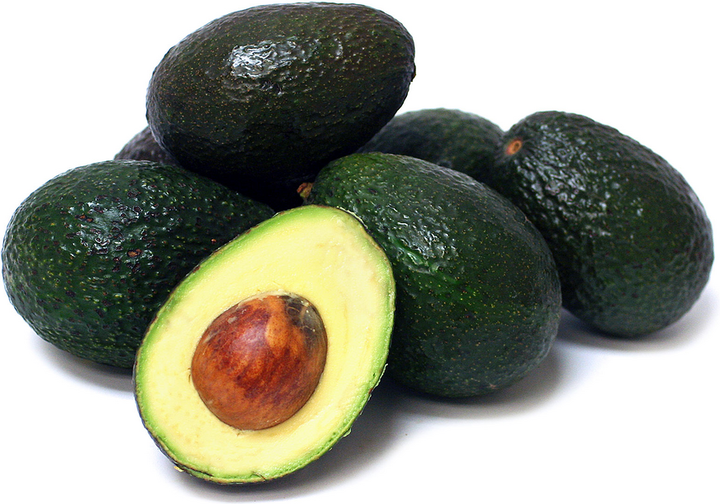Back to Vegetable and Fruit Farming
Avocado Production in the Philippines
Avocado Production in the Philippines
1. INTRODUCTION
At the end of the nineteenth century, several plant species were introduced into the Philippines. These came from different parts of the world and included fruits, vegetables and medicinal plants. Some proved to be valuable and easily adapted to the Philippine conditions while others were less promising and did not gain a wide acceptance among the populace. One of the introductions which proved to be suitable to the Philippine soil and climatic conditions was the avocado.
Known as 'aguacate' in Spanish and 'alligator pear', 'Palta pear', 'Midshipman’s butter' and 'avocado' in English, it is called as 'abokado' in the Philippine vernacular. It was introduced into the Philippines in 1890 by the Spaniards through seeds coming from Mexico. However, it was only from 1902 to 1907 that avocado was introduced successfully into the Philippines by the Americans. Through the Bureau of Agriculture (now the Bureau of Plant Industry which is under the Department of Agriculture), planting materials were received from Hawaii, Costa Rica and the United States. In 1913, the Bureau of Agriculture, together with the College of Agriculture of the University of the Philippines Los Baños, started the countrywide spreading of avocado trees. Now, avocados are found growing all over the country, most of which are cultivated in backyards.
2. PRESENT SITUATION OF AVOCADO CULTIVATION
Crop statistics, compiled by the Bureau of Agricultural Statistics of the Department of Agriculture showed that in 1990-1997 the Philippines had a total area of 4,753 hectares planted with avocado (Table 1). Average annual production was estimated at 45,884 tonnes. Leading producing regions of the country are the Cagayan Valley, Central Visayas, and Southern Tagalog, while the leading producing provinces are Bohol, located in Central Visayas, and Isabela, Nueva Vizcaya, Quirino and Cagayan which are located in the Cagayan Valley. In terms of area planted with avocado, Bicol is the leading region, followed by Cagayan Valley and Southern Luzon. Most regions of the country, however, have low productivity since avocado is grown mostly as a backyard tree or as a component of a mixed orchard with little or no care at all.
In the Philippines, two distinct types of avocado exist, namely the green-fruited and the purple-fruited types. In other countries and notably in the USA, the green-fruited varieties are preferred. In the Philippines, however, the purple-fruited varieties are preferred by the consumers.
Table 1. Area Planted with Avocado, Number of Bearing Trees, Production and Yield by Region (mean of 1990-1997 figures)
The avocado varieties in the country have been developed mainly through introduction and selection. Many varieties have been introduced since 1903 and most of them have been lost. Today, only a few varieties exist. Most of them are selections from local seedling trees, and they are confined to only a few nurseries and backyards. These are:
Cardinal: The fruit bottlenecked with an average weight of 400 grams. The skin is reddish-purple and thick (1.3 mm). The seed is small (40 g) and is loose to tight in the cavity. The flesh is yellow, moderately fibrous and constitutes 80 per cent of the whole fruit by weight.
Calma: The fruit ovoid and weighing 600 grams. The skin is reddish-purple and intermediate in thickness (1.0 mm). The seed is small (80 g) and is loose in the cavity. The flesh is yellow and is 80 per cent of the whole fruit by weight.
Uno: The fruit ovoid and weighing 400 grams. The skin is purple and is rather thick (2.0 mm). The seed is small (80 g) and is loose to tight in the cavity. The flesh is creamy yellow and is 80 per cent of the whole fruit by weight.
240: The fruit ovoid and weighing 600 grams. The skin is green and thin (1.26 mm). The seed is intermediate in size (90 g) and is rather loose in the cavity. The flesh is creamy yellow and is 80 per cent of the whole fruit by weight.
227: The fruit is bottlenecked and weighing 500 grams. The skin is purple and thick (1.3 mm). The seed is small (50 g) and is loose in the cavity. The flesh is dark yellow and is 80 per cent of the whole fruit by weight.
Recently, three new varieties were approved by the National Seed Industry Council. However, these have not yet been released to the private nurseries. These new varieties are:
Parker: The fruit ovoid and having an average weight of 600 grams. The skin is purple and thick (1.1 mm). The seed is small in size (70 g) and is tight in the cavity. The flesh is creamy yellow and is 80 per cent of the whole fruit by weight.
RCF Purple: The fruit ovoid and weighing 400 grams. The skin is reddish-purple and thick (1.2 mm). The seed is small (40 g) and is loose in the cavity. The flesh is creamy yellow and is 80 per cent of the whole fruit by weight.
Cepillo Green: The fruit pyriform and weighing 700 grams. The skin is green and intermediate in thickness (0.9 mm). The seed is intermediate in size (90 g). The flesh is dark yellow and is 80 per cent of the whole fruit by weight.
No varieties have so far been identified for rootstock use. Available seeds coming from the season’s produce are usually sown and the resulting seedlings are used as rootstocks.
3. PRODUCTION OF PLANTING MATERIALS
Since the avocado is not considered a major fruit in the country and is planted mostly in backyards, only a limited amount of planting material is being produced in a few government institutions and private nurseries. Planting materials may come in the form of grafted plants or seedlings for rootstock use. Government agencies such as the Bureau of Plant Industry of the Department of Agriculture and the University of the Philippines Los Baños, particularly the National Seed Foundation and the Department of Horticulture, produce a few hundred grafted plants of locally available varieties. Small private nurseries which also sell sexually propagated avocado plants are a good source of seedling rootstocks for propagation. Seedlings grown in the nurseries are heterogeneous - each seedling different from another, even though the seeds may have come from one variety or only from one parent tree.
The commonly used and preferred method for large-scale propagation is grafting. This method is less labour-requiring, faster and economical in the use of scion materials. In the case of cleft-grafting, 6-12 months old seedlings are used as rootstocks. Budwood sticks are obtained from the season’s mature growth with well-developed terminal buds. New shoots are formed within three to four weeks.
Other methods of propagation which are sometimes employed are inarching and shield-budding. Inarching is a slow and laborious process although it can be used during the rainy season when grafting and budding cannot be done successfully. Shield-budding on the other hand is a fast method. However, it requires skill.
4. ESTABLISHMENT OF ORCHARDS
For orchard planting in flat to gently rolling terrain, the land is cleared, ploughed deeply to break the hard subsurface soil layer and harrowed two or three times to achieve the desired soil tilth and to level the field. For rolling land and steep slopes, ploughing and harrowing are not practised. Instead, hand forking and hoeing are carried out so as to minimize erosion. Stakes are then set, following the desired distance of planting. Depending upon the variety, the plants are set at 8-10 m apart to give a population of 100-156 trees per hectare. Holes which are deep and wide enough to accommodate the root system of the planting material are then dug at the places occupied by the stakes.
Before planting, the leaves of the planting materials are pruned in half to reduce transpiration. After removal from the container, the plants are set in the prepared holes. The holes are then filled up with top soil which is packed firmly around the stem. The plants are then watered immediately after planting.
Planting usually takes place at the onset of the rainy season to minimize the need for frequent watering of the newly set plants in the field. However, in areas where there is a uniform distribution of rainfall or where irrigation water is readily available, planting takes place at any time of the year.
5. CARE AND MANAGEMENT OF ORCHARDS
Training and pruning of plants
Avocado requires very little pruning once the tree has been established. When the trees are still young, especially during the first few years, the plants are trained to a desirable shape by allowing three well-spaced branches to develop and eliminating the rest. Once the trees have attained the desired form, pruning is confined to the removal of diseased, infested and interlacing branches and watersprouts.
Fertilizer application
Many avocado trees in the Philippines are grown without the benefit of fertilizer. This may be the reason why fruit yield and quality tend to decline after fruiting for several years.
Under the existing orchard soil conditions in the country, young and nonbearing avocado trees require only nitrogenous fertilizer. Farmers apply 100-200 grams of ammonium sulphate or about 50-100 grams urea/tree, twice a year. As the trees bear fruit, 500 grams of complete fertilizer are applied, twice a year. For full-bearing trees, two kilograms of complete fertilizer are applied per year. A supplemental application of organic fertilizers, e.g. animal and poultry manure, and compost, is also given.
The fertilizer is applied at the onset and towards the end of the rainy season. It is usually applied in a ring around the trunk of the tree or in shallow holes dug beneath the tree canopy.
http://www.fao.org/3/x6902e/x6902e09.htm#:~:text=In%20the%20Philippines%2C%20two%20distinct,are%20preferred%20by%20the%20consumers.0 Likes0 Replies


















